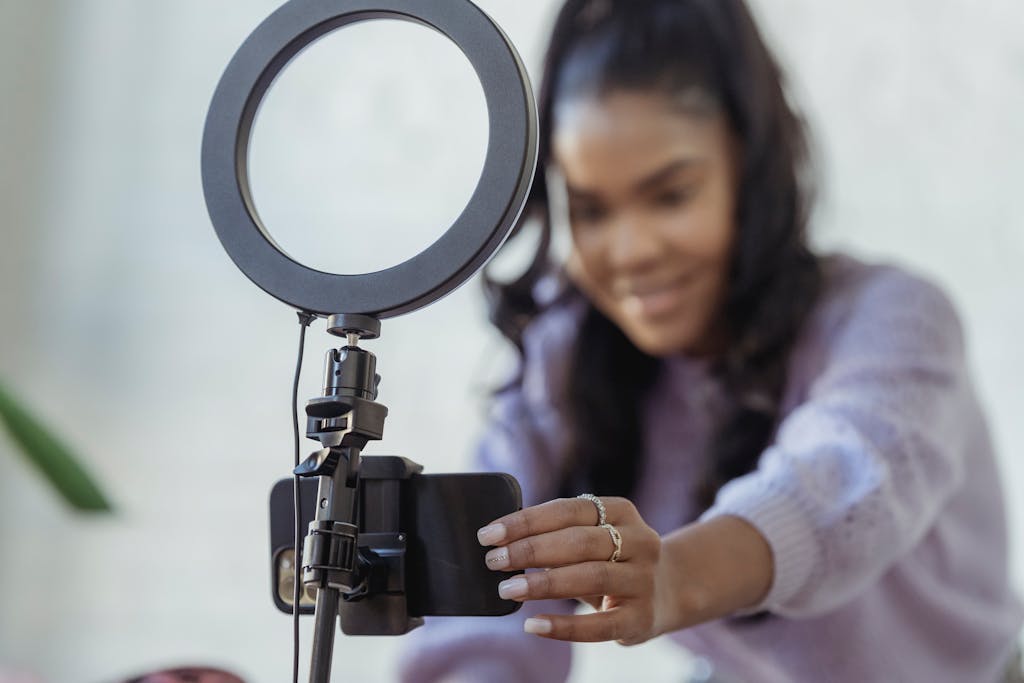
Video production is a complex process. With so many factors to consider, starting a video project can seem like an unsurmountable task. But by focusing on a few key factors – Story, Camera, Lights and Sound will set your video up for success.
#1 Make A Plan for Your Story
It is best to put the decisions of the two tips into a written plan as the next step involves the actual storyline of the video. Creating a storyboard or outline is the best way to keep the video on track, make sure the right message is getting across, and prepare for the shots that are going to need to be taken.
The first thing to understand about the storyboard for a video, is that you do not need to be a professional artist. Stick figures and simple doodles will always do the trick. The point is just to make sure that you have an understanding of what the subjects in the video are going to be doing or where they are going to be. However, sometimes a storyboard is not even necessary, and a written outline will suffice. This brings us back to the type of video that you are making. If the video is an interview or a testimonial, you may not need to draw out specific shots and just have to write a general script instead.
As long as the direction of the video is mapped out before production, then you will be prepared to actually shoot. An outline can prevent wasted time at the shoot by getting off track. Having a clear goal of what you want the video to look like at the end of production will also make editing the video, the finals step of production, much easier as you will have a tangible vision of what you want.
#2 Find A Camera That Fits Your Needs and Your Budget
When thinking about filming a video, the equipment can seem very overwhelming. However, we all have a piece of equipment that we actually know how to use very well. This piece of equipment is our phones. If you are new to videomaking using your phone can be a great place to start. Do not get caught up in what can seem overwhelming and just focus on the story that you are telling, which is really the key to a good video.
Starting with the camera. There are many consumer or pro consumer products if you are looking to take your video production to the next level. Pro consumer cameras will range from about $500 $1,500 or you can bump up production even more and get a DSLR which is an entry level camera. You do not need to invest in a cinema camera as many of the DSLR will produce high quality HD video.
Whether or not you decide to buy an entry level camera or use your phone, there are many accessories you can buy to make production even better. One of them is to get a tripod to hold the camera. This can range from about $20 to hundreds of thousands of dollars but all you need is something that will hold the weight of the camera that you have.
If you do not have a tripod, you can hold the camera yourself. It is best to hold it close to your body because if you hold it far away the footage will turn out shaky. Also remember not to hold your breath, some tend to do this, but it usually backfires as at some point you take a deep breath and ruin the shot.
If you are using your phone to film, you can purchase single or double handed grips that will make it easier to hold the phone. Some grips even come with other accessories to attach in order to get better sound or light. The price of grips can typically range from $20 to $30, but it will get more expensive the more you want to add on, such as any stabilizing aspects.
Filming on a tight budget is actually very simple and you can still produce high quality footage, even with the phone in your back pocket. While the camera is just one component to the art of filmmaking, you are still a portion of the way there.
#2 Finding the Best Light for Your Video Project
Without light, there is no video, so it holds a lot of weight. The good thing though is that the best source of light just happens to be free, the sun.
Working with natural light provides good footage, however, it can be supplemented by other light sources that you might already own. An example of an entry level piece of equipment you can purchase is the LED ring light. Ring lights can easily be purchased in stores and online on websites such as Amazon. One feature you can look for to enhance your shot even more is finding a ring light that is dimmable so you can go from a dim light to a bright light. The second is temperature control. Finding a ring light that has at least two temperatures will allow you to go from a low temperature to a high one, mimicking daylight and warm light.
To put lighting temperatures into perspective, you can usually see the temperature listed on light bulb packaging. Very warm light tends to have a yellow color while white light tends to be more like a daylight.
If you are looking for something more professional, you can buy a three-set light for three-point lighting. These are available on Amazon or B&H Photo and they range from about $250 and go up to thousands of dollars.
Three-point lighting is the most basic set up of light. The three lights are named the key light, the fill light, and the back light. The key light is usually sunlight, it is the brightest light and hits the subject’s face as it is the main source of light. The fill light fills the shadows that are the produced on the other side of the subject’s face. Finally, the back light separates the subject from the background, creating depth. Of course, you can play around with the positioning. For example, if you want a dramatic look, you might decide not to use a fill light.
Lighting has the power to set the tone of the video and can make the difference between poorly shot footage and a great take. However, having such easy access to the best lighting for any video heightens your chance at high quality work.
#4 The Final Ingredient: Sound
The final component in producing a video is sound. Just like the camera and the lights, sound plays a big role in the success of the video. However, sound might not always be necessary. In some cases, you may be shooting a silent film of sorts, or adding music to the background. Realizing where your video is going to live in the beginning of the process will dictate such decisions down the line. If the video is on Facebook, it might not use sound and just start playing for the viewer. That is why the visuals of the video must clearly tell the story and deliver the message you are trying to convey. Nonetheless, when a video requires sound, there are many tips and tricks to making your video.
While your phone is still a great tool to use for video making, it is not the best at recording sound on its own as it can pick up unwanted breathing or be too far away from the subject. One solution to these issues is to use another phone and record sound by placing it closer to the subject.
However, there are many microphones that attach to a phone grip you can purchase that is specifically made for filming with a phone. This microphone accessory is about $40 to $50 under brands such as Movo and Rhode. You can always purchase a shotgun microphone or a lapel wireless microphone, but they tend to be very expensive and are usually only necessary for an actual studio.
Sound can bring a video to life. Having good quality sound and understanding the type of sound your video requires can be very helpful in reaching the end goal of delivering a message and attracting the target audience. Whether your video uses music, speaking, or no sound at all there are many cost-efficient options for making your video the best it can be.
For more information about the importance of video to your marketing mix, visit our recent posts about the Northeast Digital Marketing Boot Camp Bites series: Why Video is Important to Your Marketing Strategy, Video Production – Setting Yourself Up for Success and Getting Your Video Seen: Tips for Video Distribution. For upcoming webinars, please contact Advance Media New York or visit http://www.nebootcamps.com.




